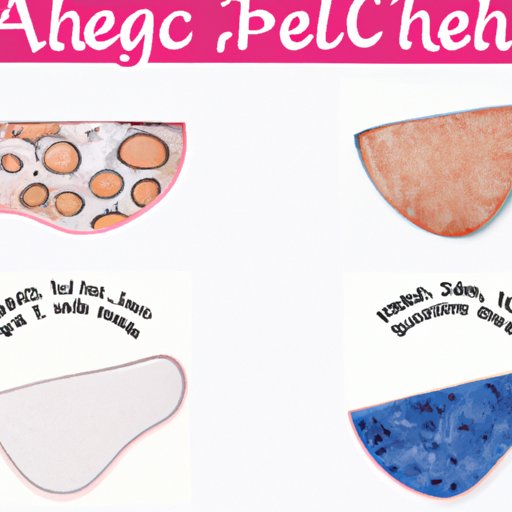Introduction
Pimple patches, also known as acne patches, are thin adhesive stickers that are placed directly onto a pimple or blemish. The patches contain active ingredients such as hydrocolloid, salicylic acid, or tea tree oil, which help to reduce redness, swelling, and inflammation. They are a popular and easy-to-use treatment for acne, and can be found in drugstores, beauty stores, and online.
Exploring the Science Behind Pimple Patches: How Do They Work?
The main purpose of pimple patches is to absorb excess oil, dirt, and bacteria from the skin, while also keeping the area protected from outside irritants. The patches are made up of a variety of materials, including polyurethane film, hydrocolloid, and salicylic acid.
Hydrocolloid patches are composed of a gel-like material that absorbs fluid and pus from the skin. These patches protect the wound from further damage and create a moist environment, which helps to speed up the healing process. Salicylic acid patches contain salicylic acid, which helps to reduce inflammation, redness, and swelling. Tea tree oil patches contain tea tree oil, which has anti-inflammatory and antimicrobial properties and helps to reduce redness and inflammation.
When the patch is applied to the skin, it forms a protective barrier over the affected area. This barrier helps to seal in moisture and keep out dirt, bacteria, and other irritants. The active ingredients in the patch then work to reduce redness, swelling, and inflammation. Additionally, the patch helps to prevent the spread of bacteria, which can lead to further breakouts.

A Comprehensive Guide to Understanding the Functionality of Pimple Patches
When using pimple patches, it is important to understand the different types of patches available and how to properly apply them. Different types of patches are designed for different areas of the skin, and some are better suited for certain types of acne. Additionally, there are different types of patches available, each with their own unique set of benefits.
When applying the patch, it is important to start by washing the affected area with a gentle cleanser. Once the area is clean, the patch can be carefully applied, being sure to press down firmly to ensure a good seal. It is important to leave the patch on for at least 8 hours, as this will allow the active ingredients to penetrate deep into the skin for maximum effectiveness.
A Closer Look at the Different Types of Pimple Patches
Hydrocolloid patches are the most common type of pimple patches and are best suited for treating whiteheads, blackheads, and cystic acne. These patches are made up of a gel-like material that absorbs fluid and pus, helping to reduce inflammation and promote faster healing. Salicylic acid patches contain salicylic acid, which helps to reduce redness and swelling. These patches are best suited for treating mild to moderate acne. Tea tree oil patches contain tea tree oil, which has anti-inflammatory and antimicrobial properties and helps to reduce redness and inflammation. These patches are best suited for treating inflammatory acne.

An Overview of How Pimple Patches Can Help Treat Acne
Pimple patches offer a number of benefits when it comes to treating acne. The patches work quickly to reduce redness, swelling, and inflammation, and can help to prevent further breakouts. Additionally, the patches form a protective barrier over the affected area, helping to keep out dirt, bacteria, and other irritants. Finally, pimple patches are easy to use and convenient, making them a cost-effective option for those looking to treat their acne.

The Benefits of Using Pimple Patches for Acne Treatment
Pimple patches offer a number of benefits for those looking to treat their acne. The patches provide quick relief, as they work quickly to reduce redness, swelling, and inflammation. Additionally, they are a cost-effective option, as they are relatively inexpensive and easy to use. Finally, they are a convenient option, as they can be applied quickly and easily wherever needed.
Conclusion
Pimple patches are an effective and convenient way to treat acne. They work quickly to reduce redness, swelling, and inflammation, and form a protective barrier over the affected area. Different types of patches are available, each with their own unique set of benefits. Ultimately, pimple patches offer a quick, cost-effective, and convenient solution for those looking to treat their acne.
(Note: Is this article not meeting your expectations? Do you have knowledge or insights to share? Unlock new opportunities and expand your reach by joining our authors team. Click Registration to join us and share your expertise with our readers.)
